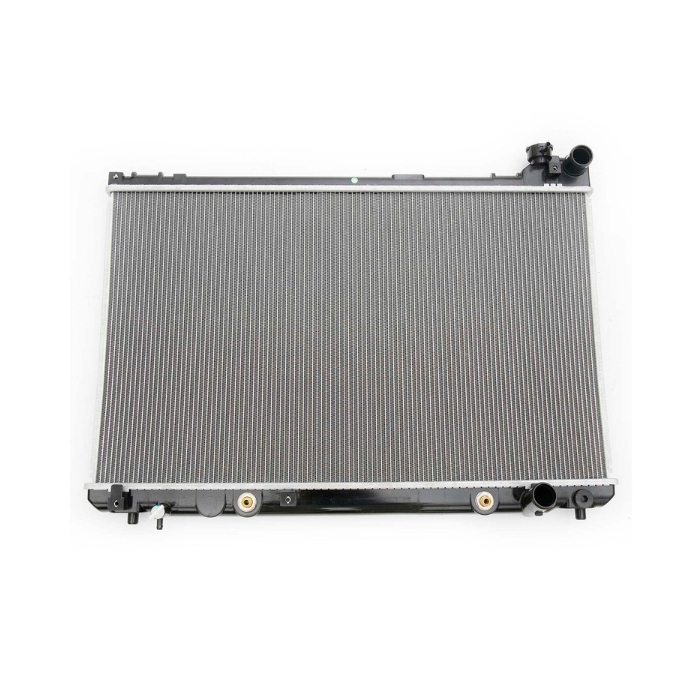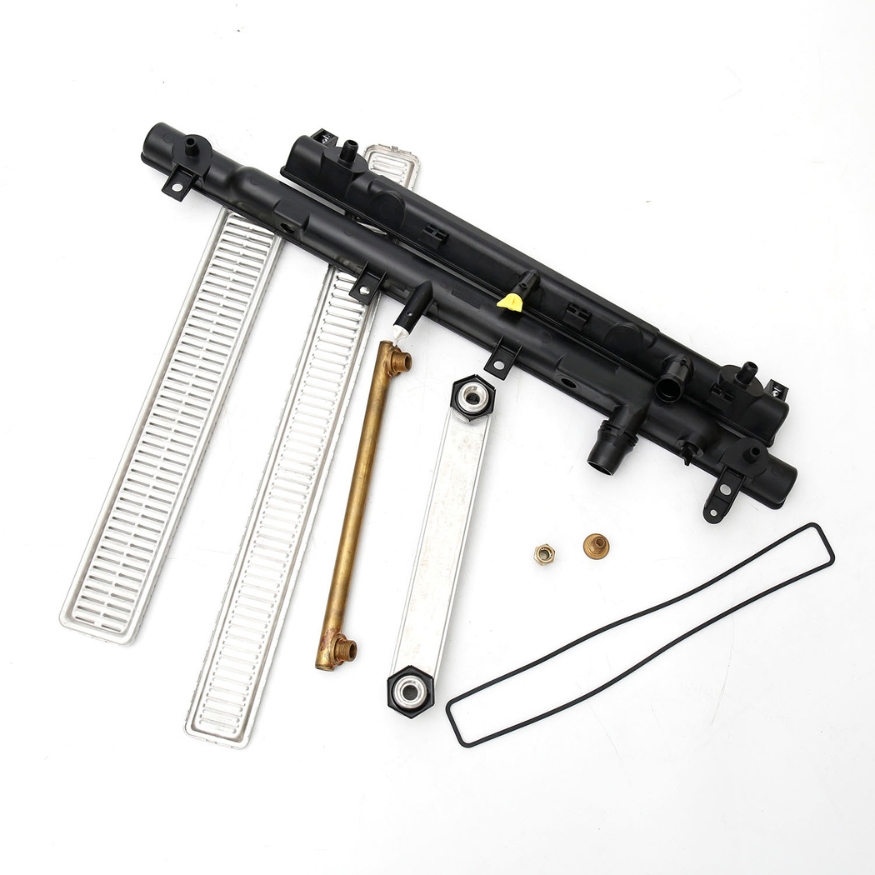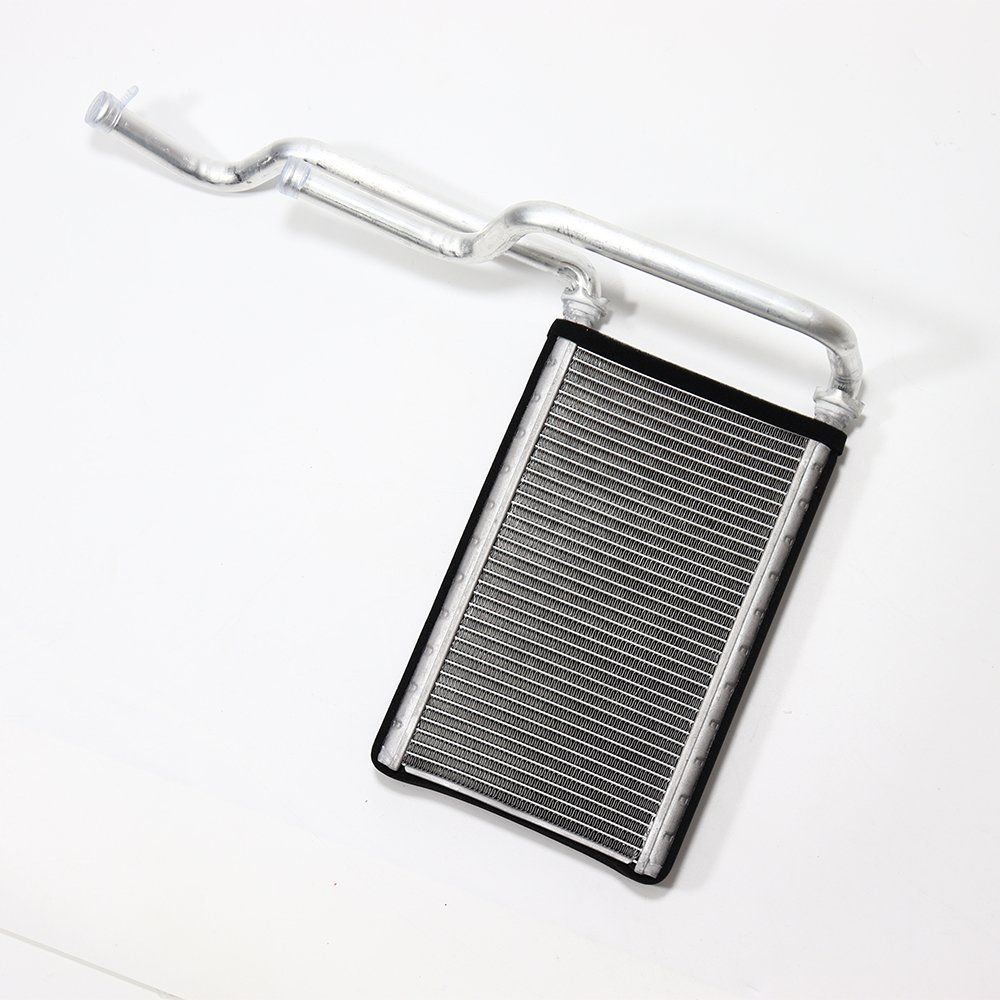The role of the radiator in the cooling system
The role of the radiator in the automotive cooling system
In the complex machinery of an automobile, the cooling system stands as a linchpin for maintaining the engine's functionality and longevity. Central to this system is the radiator, a component that plays multiple indispensable roles.
Heat Dissipation: The Core Function
At its most fundamental level, the radiator is responsible for dissipating heat. The engine, during operation, generates an enormous amount of heat due to the combustion process. This heat, if not managed, can cause the engine to overheat, leading to severe damage. The radiator acts as a heat exchanger. Coolant, a mixture of water and antifreeze, circulates through the engine, absorbing this generated heat. The hot coolant then flows into the radiator. Inside the radiator, which consists of a network of thin tubes surrounded by fins, the heat is transferred from the coolant to the surrounding air. The large surface area provided by the tubes and fins maximizes this heat - transfer process. As the air passes over the radiator, it absorbs the heat, cooling down the coolant. This cooled coolant then returns to the engine, ready to absorb more heat, creating a continuous cycle of heat dissipation.
Maintaining Optimal Engine Temperature
The radiator plays a pivotal role in maintaining the engine at its optimal operating temperature. Every engine is designed to function most efficiently within a specific temperature range. If the engine runs too cold, the fuel may not burn completely, leading to reduced fuel efficiency and increased emissions. On the other hand, if it runs too hot, components can expand, warp, or even seize. The radiator, in conjunction with the thermostat (a temperature - regulating device), ensures that the engine temperature remains within the ideal range. The thermostat controls the flow of coolant through the radiator based on the engine's temperature. When the engine is cold, the thermostat restricts the flow of coolant to the radiator, allowing the engine to warm up quickly. Once the engine reaches its optimal temperature, the thermostat opens, allowing the coolant to flow through the radiator for cooling. This precise control, with the radiator as the main cooling element, helps the engine perform at its best.
Protecting Engine Components
By effectively cooling the engine, the radiator indirectly protects various engine components. High temperatures can cause wear and tear on engine parts such as pistons, cylinders, and valves. When the engine overheats, the lubricating oil can break down, losing its ability to protect moving parts from friction. The radiator helps prevent such scenarios by keeping the engine cool. This not only extends the lifespan of these components but also reduces the frequency of maintenance and repair. A well - functioning radiator ensures that the engine runs smoothly, minimizing the risk of unexpected breakdowns and costly repairs.
Compatibility with Modern Engine Technologies
In the era of advanced engine technologies, including turbocharging, direct injection, and hybrid powertrains, the role of the radiator has become even more critical. Turbocharged engines produce additional heat due to the compression of air by the turbocharger. The radiator must be able to dissipate this extra heat to prevent the engine from overheating. Direct - injection engines, which operate at high pressures and temperatures, also rely on an efficient radiator to maintain optimal performance. In hybrid vehicles, the radiator not only cools the internal combustion engine but also the electric motor and battery. As these technologies continue to evolve, the radiator needs to be designed and optimized to meet the specific cooling requirements of each system, highlighting its importance in the development of modern automobiles.
In conclusion, the radiator is far more than just a simple heat - dissipating device in the automobile cooling system. It is a key component that enables the engine to operate efficiently, protects engine components, and adapts to the ever - changing landscape of automotive technology. Without a well - functioning radiator, the performance, reliability, and lifespan of an automobile would be severely compromised.




